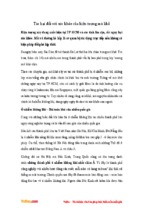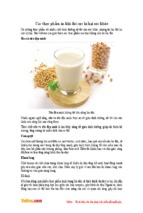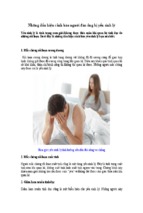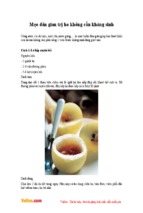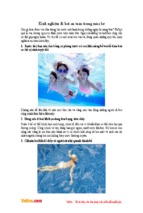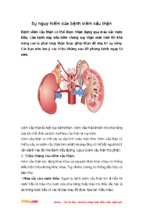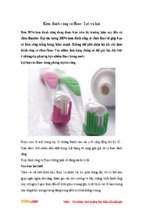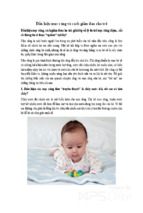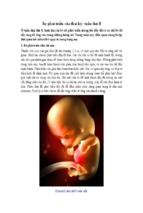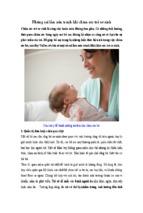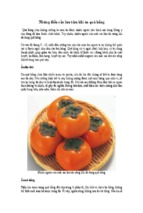Application of Lean to Healthcare Processes:
A Complex System Perspective
Dr. Hugh McManus
Associate Director,
Lean Advancement Initiative Educational Network
Talk Outline
•
Part I: Lean and Healthcare
• Healthcare – a complex system of processes behaving
badly
Lean – a method for process improvement
Some local lean successes in healthcare
•
•
•
Part II: Effects of Variability and Complexity
• Participatory and Computer simulations
• Impact on application of lean to healthcare
• Conclusions and paths forward
McManus – Lean Healthcare – March 2012 – © LAI EdNet 2
Imperatives – United States
•
•
•
•
Over 16% of GDP spent in healthcare expenses (2007)
117% increase in worker insurance premiums, 99 to 08
119% increase in employer insurance premiums, 99 to 08
US spends 75% more on healthcare than G-5 countries (2006)
•
•
•
44,000 - 98,000 deaths attributed to medical errors (1999)
32% of patients report medical mistake, medication error or
lab error in past two years (2007)
12-79% gap between delivered vs recommended care (2003)
Access
•
•
•
•
45 million Americans are uninsured
Individuals over 65 expected to increase over 50% by 2020
Fragmented provider network, IT systems, insurance, etc.
40% of patients not treated or medicated due to cost (2004)
Trouble
•
•
•
60% of doctors would not recommend career to young people
50% of ED caregiver time spent on paperwork (2001)
315,250 shortage of RNs predicted for 2015
Cost
Quality
McManus – Lean Healthcare – March 2012 – © LAI EdNet 3
Comparison of Spending
As reported by Eric Dickson, MD
LAI Lean Academy Jan. 2011
McManus – Lean Healthcare – March 2012 – © LAI EdNet 4
Comparison of Results
from Eric Dickson, MD
LAI Lean Academy Jan. 2011
McManus – Lean Healthcare – March 2012 – © LAI EdNet 5
US Healthcare - A Value Crisis
•
Lean can increase healthcare value delivery by:
•
•
•
Improving healthcare quality
Decreasing healthcare costs
It is one piece of a puzzle to solve the US healthcare crisis
McManus – Lean Healthcare – March 2012 – © LAI EdNet 6
Lean Arises From Japanese Auto
Industry
1947
1957
1967
1977
1987
Trends have continued since this
1989 data reported in The Machine
That Changed The World
McManus – Lean Healthcare – March 2012 – © LAI EdNet 7
Lean as a discipline
•
•
•
North American (mostly)
research captured and codified
Toyota practices
Emphasis on transforming
legacy organizations
Initially focused on
manufacturing, but always
intended to apply to entire
value stream
Lean is a method for process
improvement – It can be
applied to any process,
including those of Healthcare
McManus – Lean Healthcare – March 2012 – © LAI EdNet 8
Lean Improves Processes by
Eliminating Waste
•
•
•
•
Wastes require excess work, excess capacity, excess
time (and excess costs) to deliver product
Standardize, stabilize, smooth workflow to make
poorly-performing processes apparent
• Only make what is needed—buffers hide problems
• Just in time requests/deliveries/production, linked
by a visual process, reveal weak links
Never deliver or accept a defective product
Don’t overburden people/processes or otherwise
threaten their performance reliability
Principles are generic—they apply to any process
McManus – Lean Healthcare – March 2012 – © LAI EdNet 9
Lean Concepts, Terms and Tools
You Will Learn
Actually, no.
We will talk about how lean has been and can be
applied to knowledge and service work,
including Health Care
McManus – Lean Healthcare – March 2012 – © LAI EdNet 10
Lean Thinking
Fundamentals
•
Specify value – from the standpoint of the end
customer (the patient)
•
Identify the value stream – all value-added steps across
departmental boundaries (the value stream),
eliminating steps that do not create value
•
Make value flow continuously – eliminate causes of
delay, such as batches and quality problems
•
Let customers pull value – avoid pushing work onto the
next process or department; let work and supplies be
pulled as needed
•
Pursue perfection – through continuous process
improvement
Ref: Mark Graban, Lean Hospitals (CRC Press, 2009).
McManus – Lean Healthcare – March 2012 – © LAI EdNet 11
Defining Value
• Customer is willing to pay for activity
• Activity is transformative, moving the
product closer to what the customer wants
•
or activity reduces risk and/or uncertainty in
the product or process
• Activity is done right the first time
•
or iterations or experiments are planned
and controlled
McManus – Lean Healthcare – March 2012 – © LAI EdNet 12
Value-Added vs.
Non-Value Added Activities
Value-Added Activity
Transforms patient, material, information, decisions, or risks
And the customer wants it (or would if they understood it…)
And it’s done right the first time (or as right as possible…)
“Needed” or “Enabling” Activity
No value Is created, but cannot be eliminated based on current state of
process, technology, policy or thinking
Team coordination, corporate reporting, required record-keeping…
Non Value-Added Activity (WASTE)
Consumes resources but creates no value to the customer
Pure waste - if this activity is removed, can the process continue?
Waiting, Inventory, Movement, Excessive/defective processing…
McManus – Lean Healthcare – March 2012 – © LAI EdNet 13
Eight
Seven Wastes (muda)
1. Over-production
Doing more than is needed by the customer or
doing it before it is needed
2. Inventory
Excess inventory cost through financial costs,
storage and movement costs, spoilage, wastage
3. Transportation
Unnecessary movement of the product in the
system (patient, specimen, materials)
4. Motion
Unnecessary movement by employees
5. Waiting
Waiting for the next event to occur or the next
work activity
6. Defects
Time spent doing something incorrectly,
inspecting errors, or fixing errors
7. Over-processing
Doing work that is not valued by the customer, or
caused by definitions of quality not aligned with
patient needs
8. Human Potential
Waste and loss due to not engaging employees,
listening to their needs, and supporting their
careers
Ref: Mark Graban, Lean Hospitals (CRC Press, 2009).
McManus – Lean Healthcare – March 2012 – © LAI EdNet 14
Waste in Healthcare
•
•
“20-30% of Healthcare Spending is Waste”*
• overtreatment of patients
• failure to coordinate care
• administrative complexity
• burdensome rules
• fraud
Only 31-34% of nurse time spent with
patients**
*Donald Berwick, former administrator of the Centers for Medicare
and Medicaid Services, former President, Institute for
Healthcare Improvement
**Data collected from multiple sources by Mark Graban
McManus – Lean Healthcare – March 2012 – © LAI EdNet 15
Much of the PATIENT’S
time is spent WAITING
Notional example of Triage/test/Treat cycle
Waiting
Triage
Move
Start
Treat
Tests
Wait
Wait
Time
Out-process
Finish
= Value
Added Time
= Non-Value
Added Time
(WASTE)
McManus – Lean Healthcare – March 2012 – © LAI EdNet 16
80% or more of the time
spent in a healthcare
processes is waste
Write Orders
Clerk writes req
Req Tubed
Assescioned
Print Labels
Sorting
Checking
Travel
Checks Book
To Room
Get Supplies
Wait
Check ID
Samples
Label
To Basket
Runners
Test
Post
Read
Wait
Treat
Process
5
20
10
5
5
5
5
10
5
5
5
10
5
5
5
10
10
10
15
5
20
5
180
Clerk writes req
Req Tubed
Assescioned
Print Labels
Sorting
Checking
Travel
Checks Book
To Room
Get Supplies
Wait
Check ID
Label
To Basket
Runners
Post
Wait
Write Orders
Samples
Test
Read
Treat
Sorted
20
10
5
5
5
5
10
5
5
5
10
5
5
10
10
15
20
5
5
10
5
5
Source: University of Iowa Hospitals and Clinics
180
Less than 20% Value Added
A real medical example - a test-and-treat cycle
Most of the patient time is spent waiting, moving, etc.
McManus – Lean Healthcare – March 2012 – © LAI EdNet 17
Lean Focuses on
Reducing Waste
Lead Time
Increase % Value Added Work and reduce Waste to
Increase Throughput, Lower Cost and Improve Quality
McManus – Lean Healthcare – March 2012 – © LAI EdNet 18
Interesting Analogy:
Waste in Product Development
•
•
•
•
38% job active:
Most aerospace
engineering tasks are
62% job idle
12% value-added
idle much of the time
activities
The actual work done
11% necessary
NVA activities
by engineers is about
1/3 waste, 1/3 enabling,
and 1/3 value added
15% pure
77% of time
waste
Work is varied and
is PURE
activities
unpredictable
WASTE
Survey of aerospace PD
Tasks are often similar,
process time (2000)
even repetitive
10+ years of lean PD work can be leveraged
McManus – Lean Healthcare – March 2012 – © LAI EdNet 19
•
•
•
Healthcare has many processes and lots of
waste
Lean is an overall method (with many tools)
for improving processes by removing waste
There are many opportunities for lean
application in Healthcare.
McManus – Lean Healthcare – March 2012 – © LAI EdNet 20
- Xem thêm -

